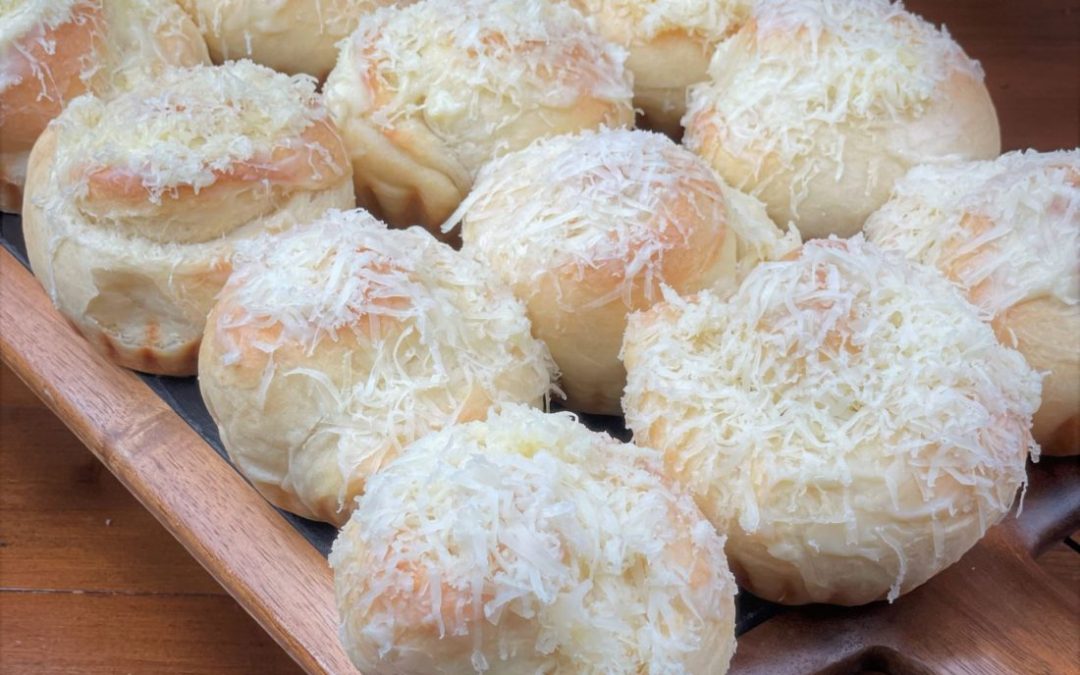
Just like Catholicism and our love for a good fiesta, Filipinos learned the art of baking from our Spanish colonizers. Bread, cakes, and other pastries were not part of the Filipino diet until the Spanish introduced them to us; hence, the Hispanic names for most of our classic baked products, such as pandesal, pastel de amor, leche flan, and many more.
Our ensaymada, for one, is a descendant of the Ensaïmada from Mallorca, Spain, which is described as a “straightforward” pastry made out of bread flour, sugar, water, eggs, a starter dough, and a kind of pork lard called saïm, which is probably where the name was derived. It is shaped into a coil and then baked, after which it is dusted with powdered sugar after cooling. The first historical record of the ensaïmada goes back to the 17th century where there was evidence of this type of pastry being made for festivals and celebrations.
The Philippine ensaymada is described as a brioche-like pastry baked with butter instead of lard. While it is airy and soft, it is also moistened by that rich, buttery, and cheesy topping. The toppings really depend on how special the ensaymada is. There are those topped simply with margarine and white sugar, which is a favorite for everyday morning coffee or merienda. Neighborhood and traditional bake shops like Kamuning Bakery and bakery chain Julie’s offer ensaymada in this classic style.
There are also those that are called upon for special occasions such as Christmas when ensaymadas are as much a part of the holiday table as bone-in ham and callos. Boxes of these special pastries from beloved brands like Cunanan’s of Pasig or Felicia’s of Bacolod are reserved even months ahead to make sure that loved ones get theirs for Noche Buena and Christmas morning. A bite of these tasty morsels are laden with buttercream, sugar, and powdery quezo de bola—a sign that what you are getting is the premium stuff. Traditionally paired with hot mugs of tsokolate, it is the holiday tradition of many for good reason.
Still, there are those who have applied their twists on the beloved local pastry, with some more successful than others. Pearl de Guzman’s innovations on the classic premium ensaymadas of her mother are the bestsellers at her Sta. Rosa, Laguna bakeshop, Baby Pat. She has stuffed them with ube, gruyere cheese, and Chinese ham, and topped them with Nutella, Speculoos, and Tablea (local chocolate). These flavors have made the ensaymada relevant to a new generation of pastry lovers, but her dedication to quality is truly what endears it to all.
Ensaymada is such a beloved culinary tradition that versions of it are made to fit every occasion and market bracket. Food trends come and go, but something that is delicious, nostalgic, and made with love will always have a place in our hearts and bellies.


Recent Comments